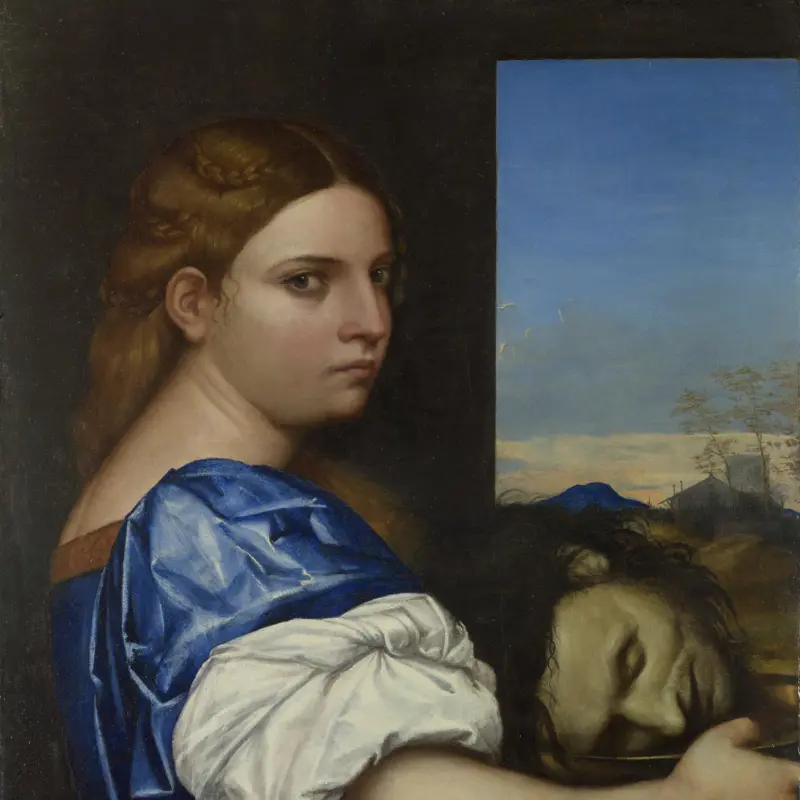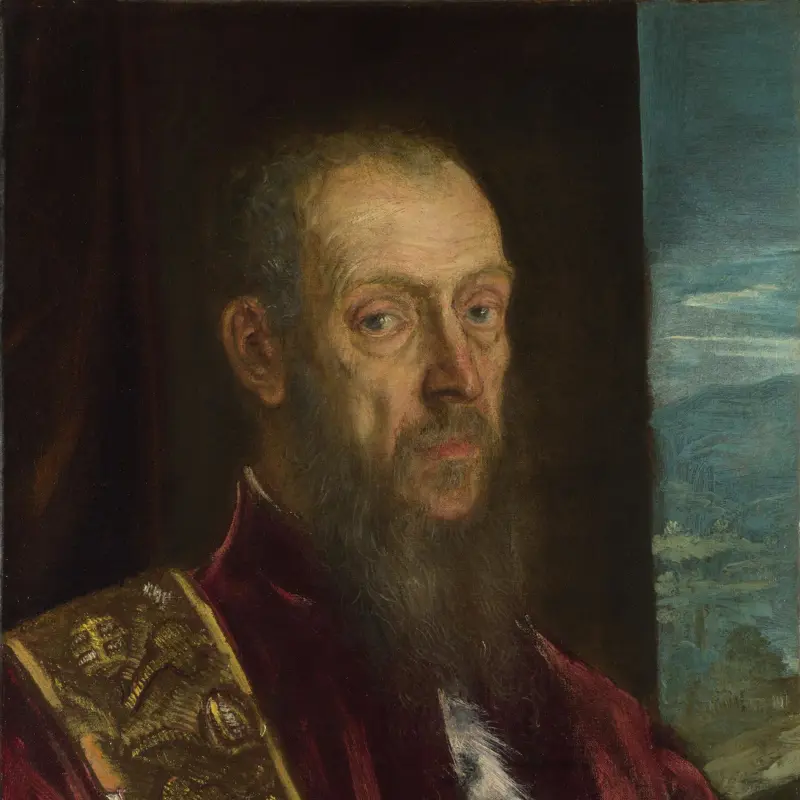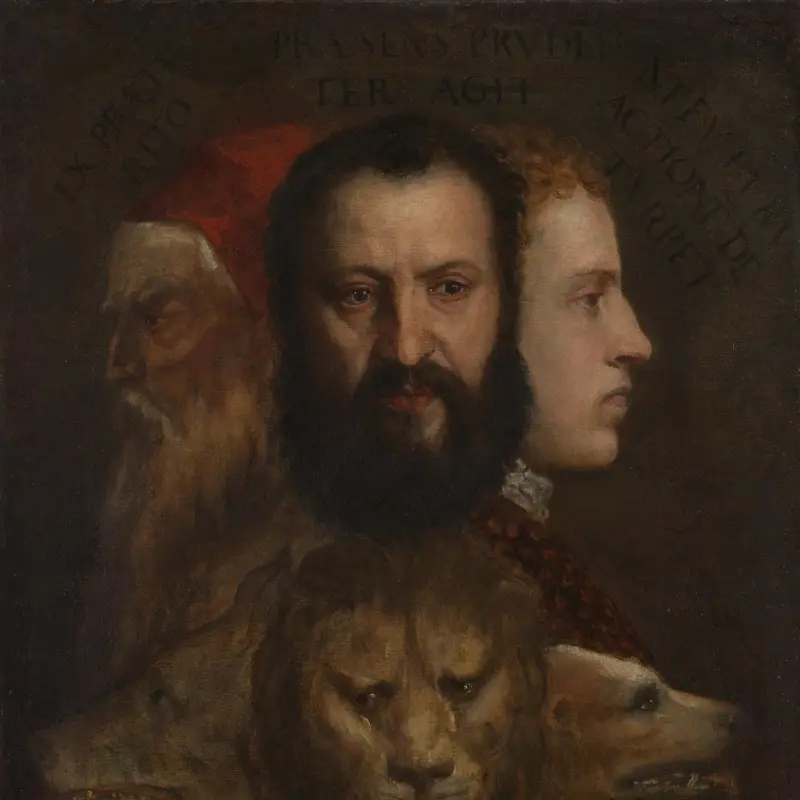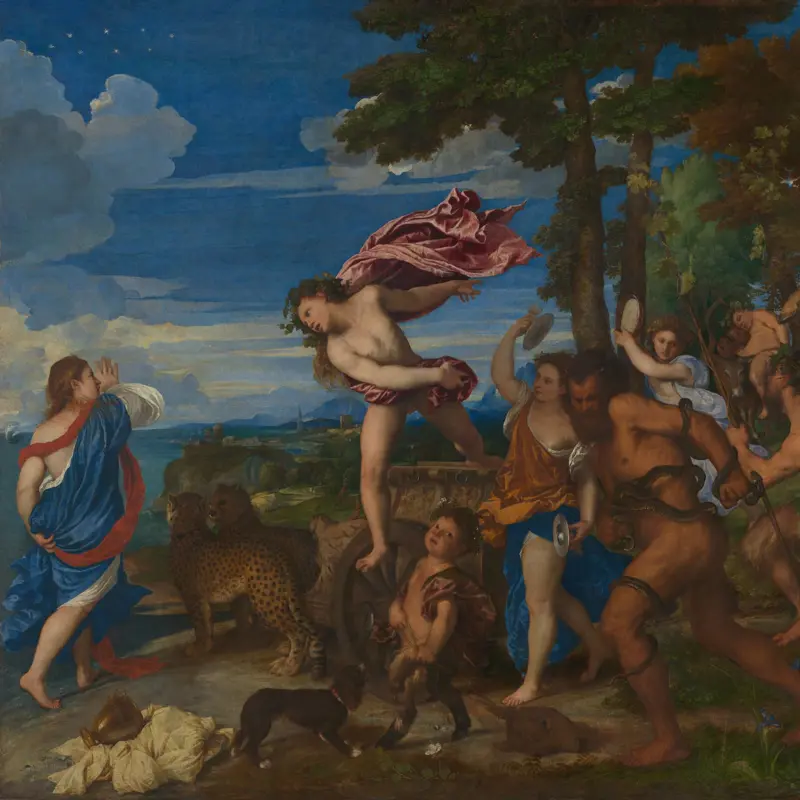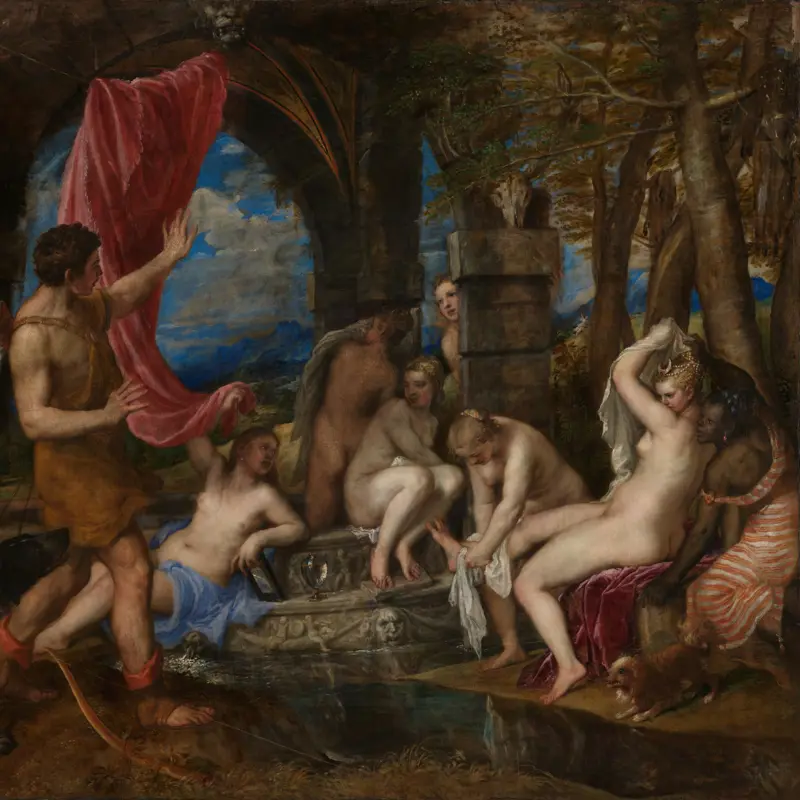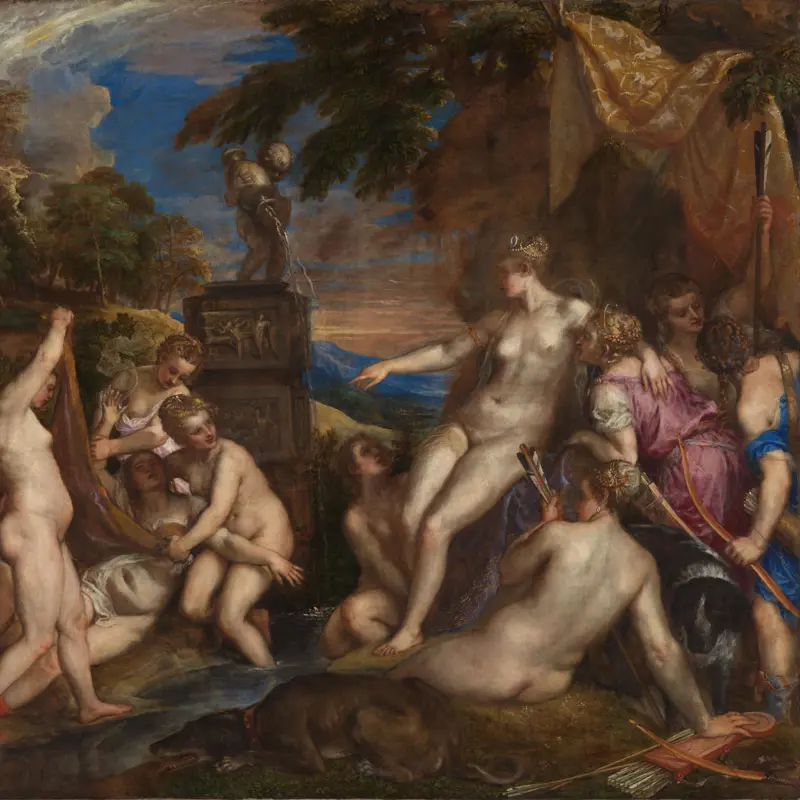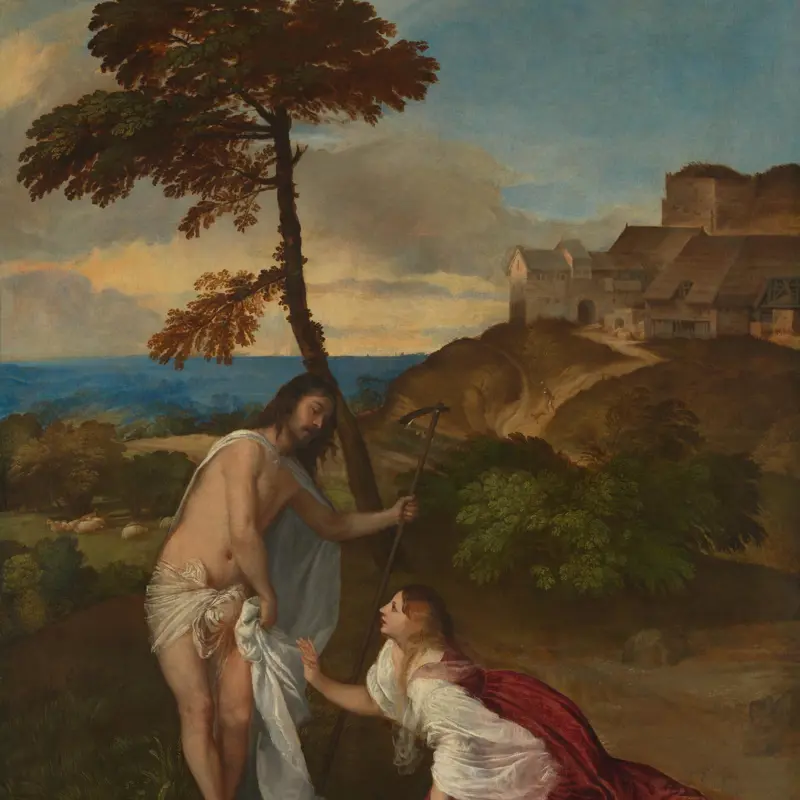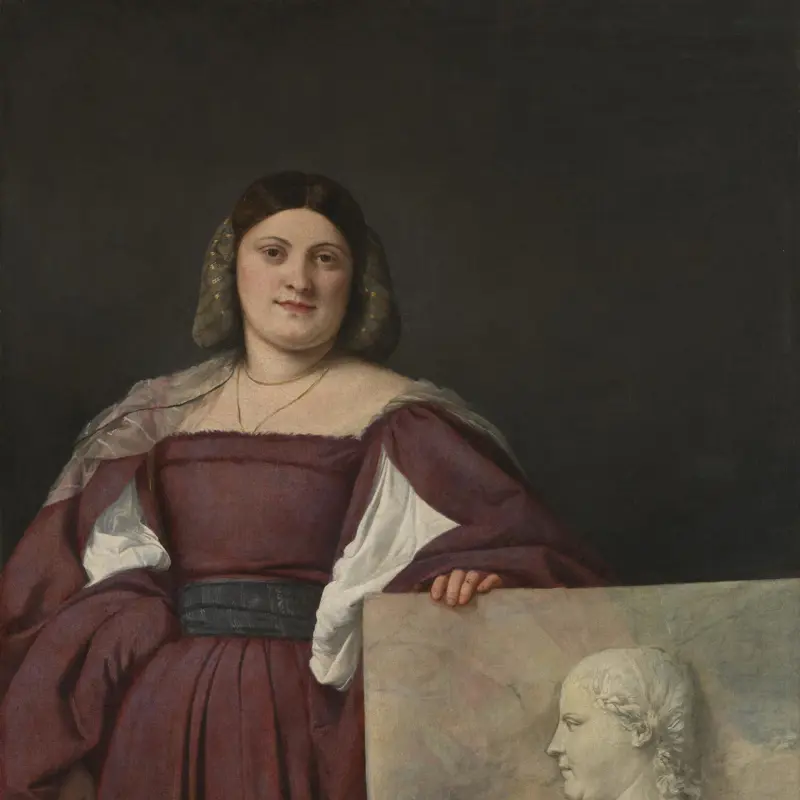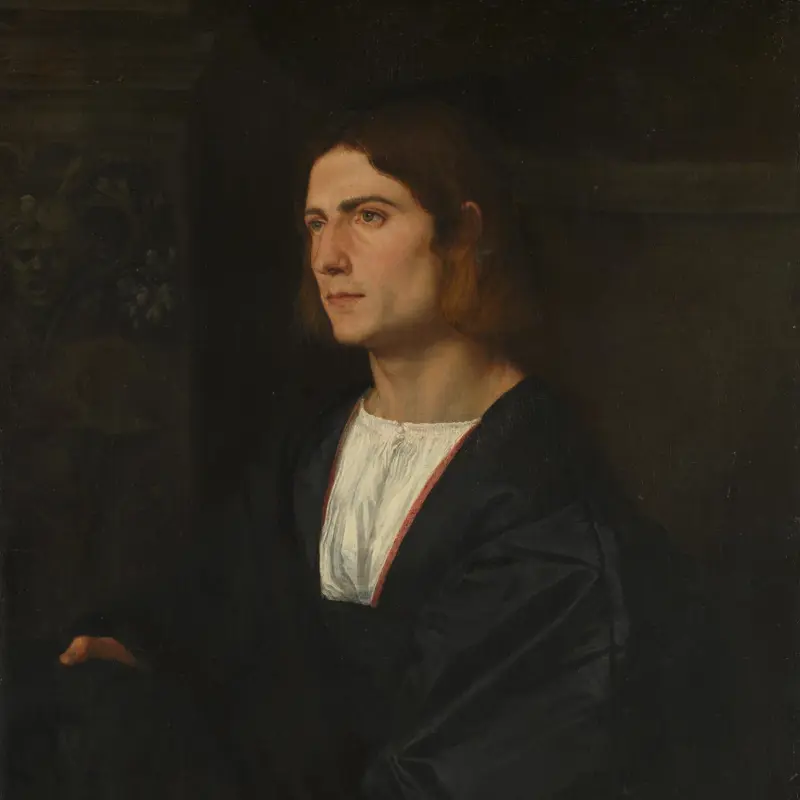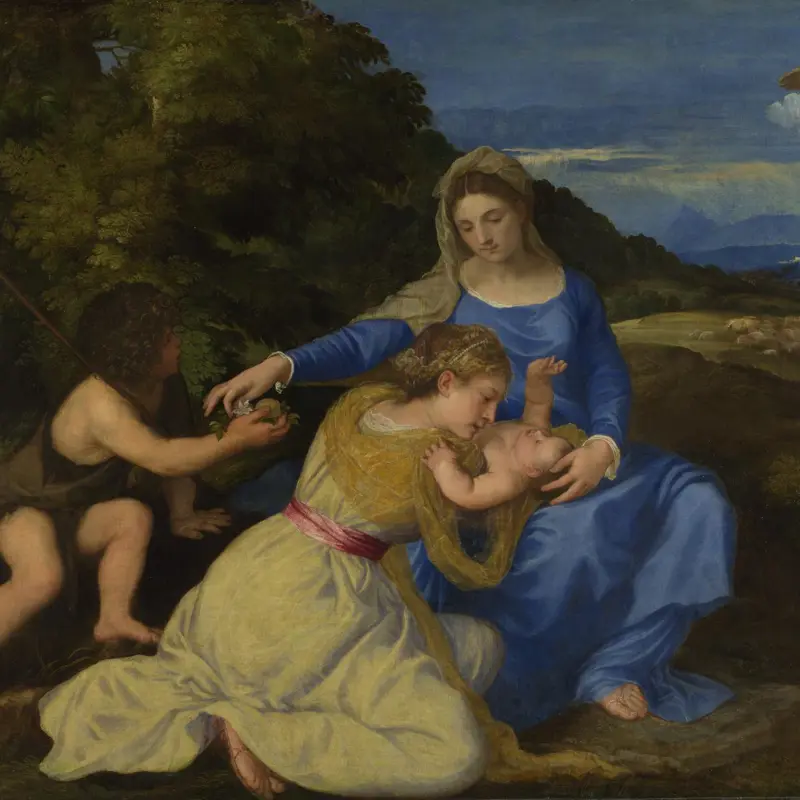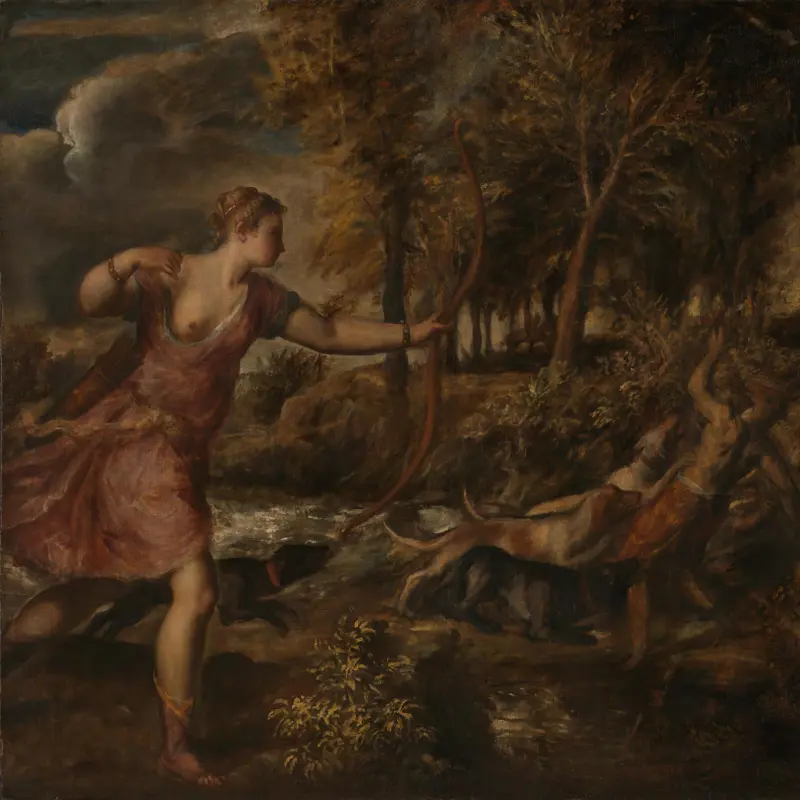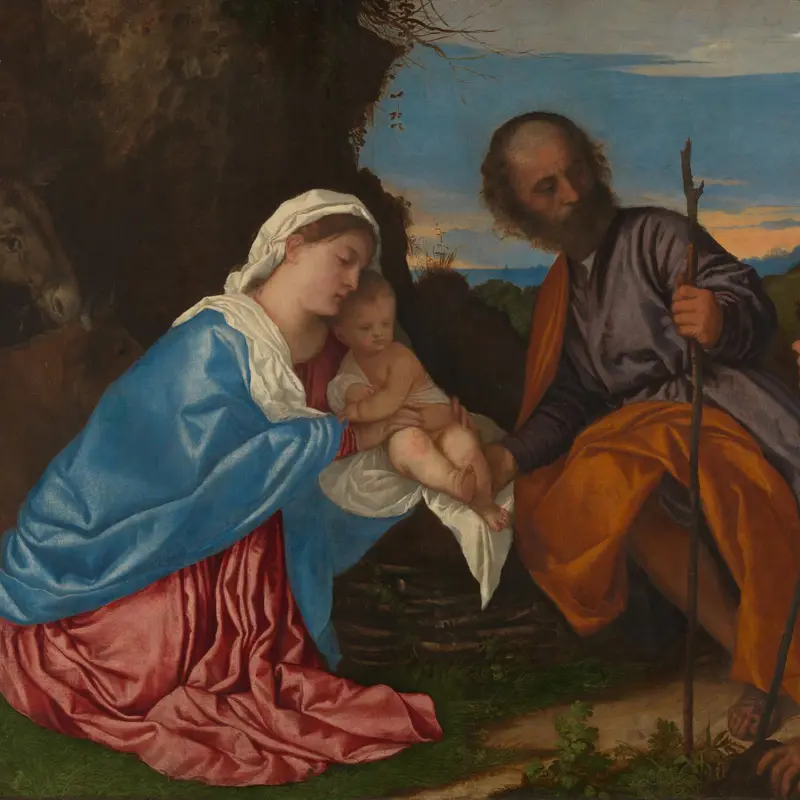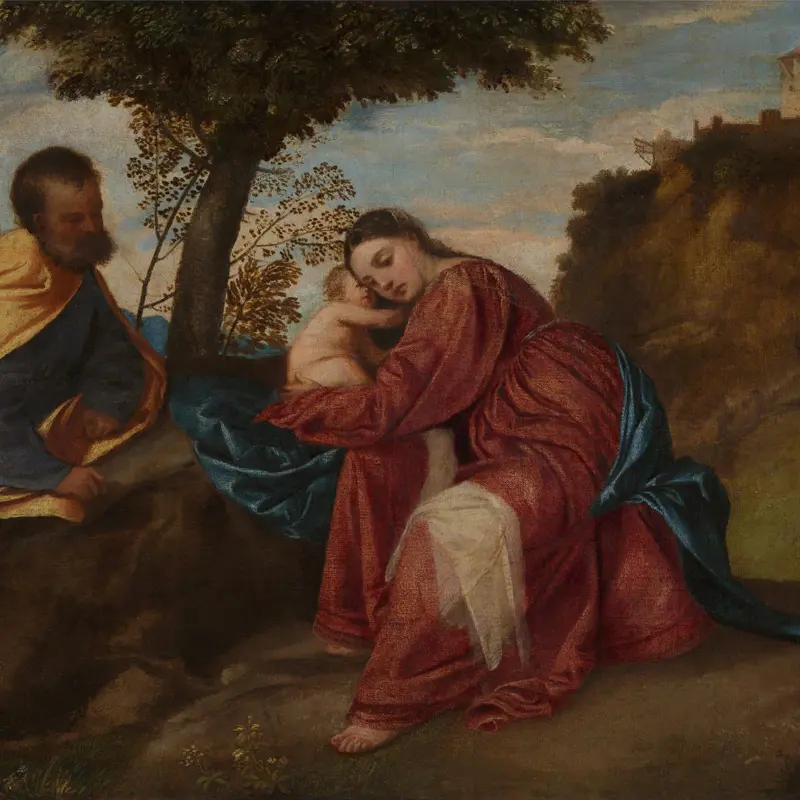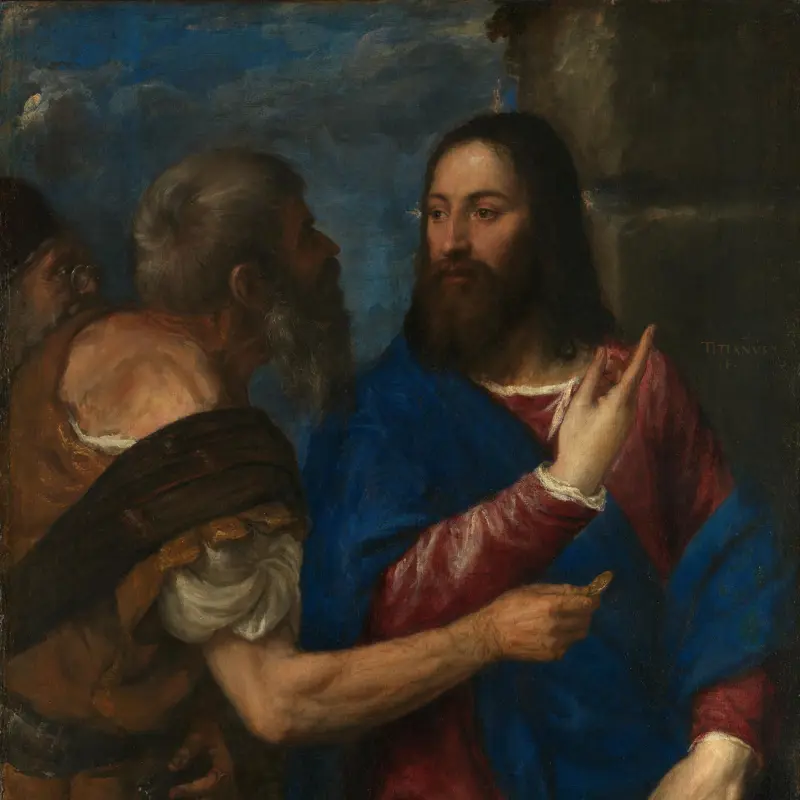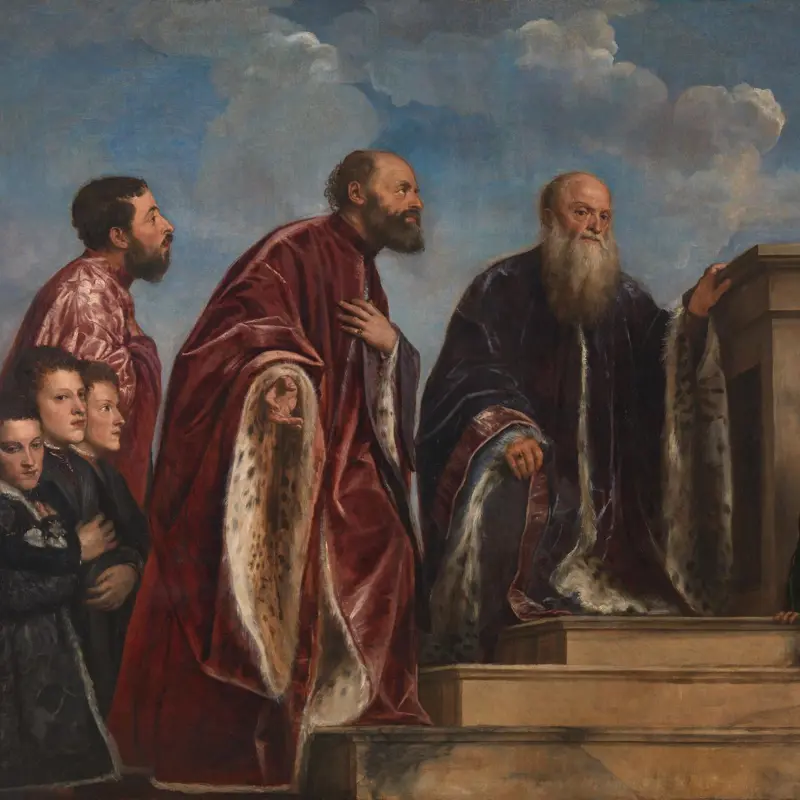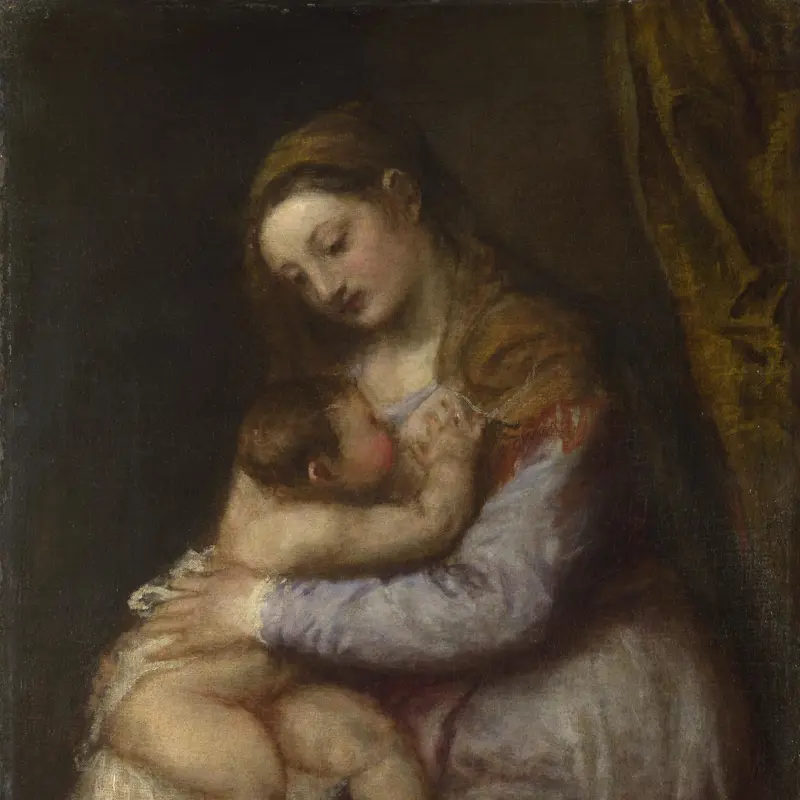Titian is a towering figure in European art. He inspired generations of painters from Diego Velázquez (1599–1660) and Anthony van Dyck (1599–1641), to John Constable (1776–1837) and Edouard Manet (1832–1883). Over the course of his long career, Titian was the leading painter in Venice. He was in great demand from prestigious foreign patrons, notably King Philip II of Spain (1527–1598). The National Gallery holds one of the most significant collections of his works outside Italy and Spain, spanning his whole career.
The rich colours and light-suffused landscapes of Titian’s early paintings Noli me Tangere and Holy Family with a Shepherd show the influence of Giovanni Bellini and Giorgione, with whom Titian worked closely. The brilliant jewel tones of Bacchus and Ariadne demonstrate his renowned mastery of colour. Titian became highly sought-after as a portrait painter. His sitters, in portraits such as La Schiavona, display a remarkable sense of poise and self-awareness.
In his late paintings, including the celebrated series of poesie ('poems'), Titian experimented with highly expressive brushwork. Suggesting the sensuous texture of fabric and flesh through his bold use of brush and pigment, he charged ancient myths with drama and emotion.


